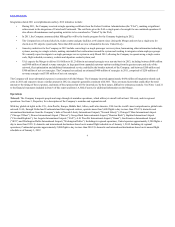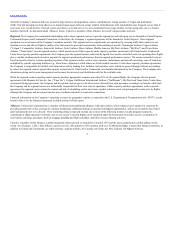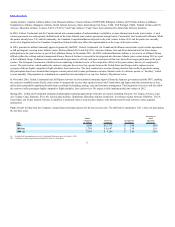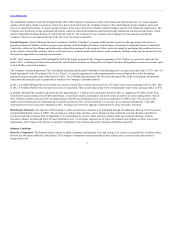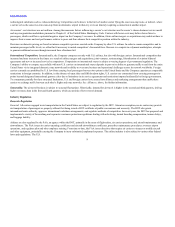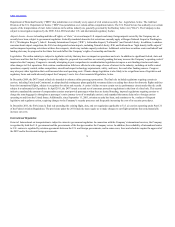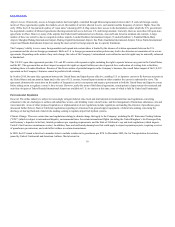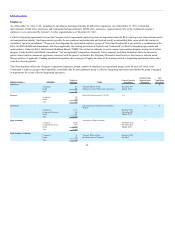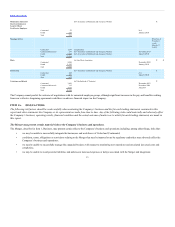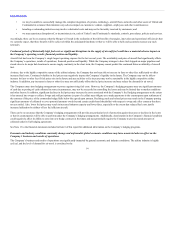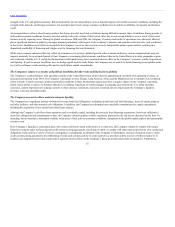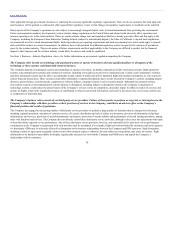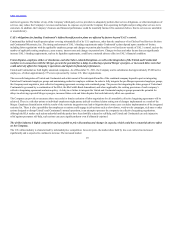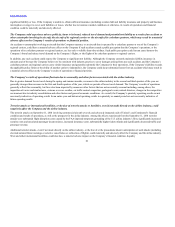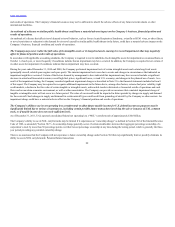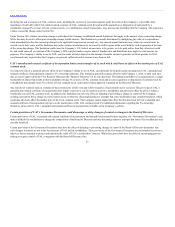United Airlines 2011 Annual Report Download - page 15
Download and view the complete annual report
Please find page 15 of the 2011 United Airlines annual report below. You can navigate through the pages in the report by either clicking on the pages listed below, or by using the keyword search tool below to find specific information within the annual report.
Table of Contents
• we may be unable to successfully manage the complex integration of systems, technology, aircraft fleets, networks and other assets of United and
Continental in a manner that minimizes any adverse impact on customers, vendors, suppliers, employees and other constituencies;
• branding or rebranding initiatives may involve substantial costs and may not be favorably received by customers; and
• we may experience disruption of, or inconsistencies in, each of United’s and Continental’s standards, controls, procedures, policies and services.
Accordingly, there can be no assurance that the Merger will result in the realization of the full benefits of synergies, innovation and operational efficiencies that
we currently expect, that these benefits will be achieved within the anticipated timeframe or that we will be able to fully and accurately measure any such
synergies.
Continued periods of historically high fuel costs or significant disruptions in the supply of aircraft fuel could have a material adverse impact on
the Company’s operating results, financial position and liquidity.
Aircraft fuel has been the Company’s single largest operating expense for the last several years. The availability and price of aircraft fuel significantly affects
the Company’s operations, results of operations, financial position and liquidity. While the Company arranges to have fuel shipped on major pipelines and
stored close to its major hub locations to ensure supply continuity in the short term, the Company cannot predict the continued future availability of aircraft
fuel.
At times, due to the highly competitive nature of the airline industry, the Company has not been able to increase its fares or other fees sufficiently to offset
increased fuel costs. Continued volatility in fuel prices may negatively impact the Company’s liquidity in the future. The Company may not be able to
increase its fares or other fees if fuel prices rise in the future and any such fare or fee increases may not be sustainable in the highly competitive airline
industry. In addition, any increases in fares or other fees may not sufficiently offset the fuel price increase and may reduce the demand for air travel.
The Company enters into hedging arrangements to protect against rising fuel costs. However, the Company’s hedging programs may use significant amounts
of cash due to posting of cash collateral in some circumstances, may not be successful in controlling fuel costs and may be limited due to market conditions
and other factors. In addition, significant declines in fuel prices may increase the costs associated with the Company’s fuel hedging arrangements to the extent
it has entered into swaps or collars. Swaps and sold put options (as part of a collar) may obligate us to make payments to the counterparty upon settlement of
the contracts if the price of the commodity hedged falls below the agreed upon amount. Declining crude and related prices may result in the Company posting
significant amounts of collateral to cover potential amounts owed (beyond certain credit-based thresholds) with respect to swap and collar contracts that have
not yet settled. Also, lower fuel prices may result in increased industry capacity and lower fares, especially to the extent that reduced fuel costs justify
increased utilization by airlines of less fuel efficient aircraft.
There can be no assurance that the Company’s hedging arrangements will provide any particular level of protection against increases or declines in fuel costs
or that its counterparties will be able to perform under the Company’s hedging arrangements. Additionally, deterioration in the Company’s financial condition
could negatively affect its ability to enter into new hedge contracts in the future and may potentially require the Company to post increased amounts of
collateral under its fuel hedging agreements.
See Note 13 to the financial statements included in Item 8 of this report for additional information on the Company’s hedging programs.
Economic and industry conditions constantly change and unfavorable global economic conditions may have a material adverse effect on the
Company’s business and results of operations.
The Company’s business and results of operations are significantly impacted by general economic and industry conditions. The airline industry is highly
cyclical, and the level of demand for air travel is correlated to the
14


